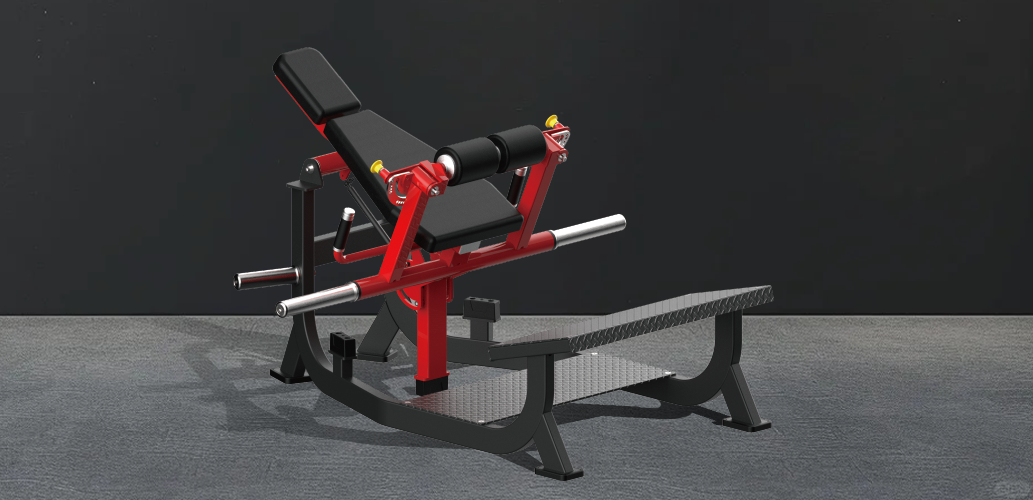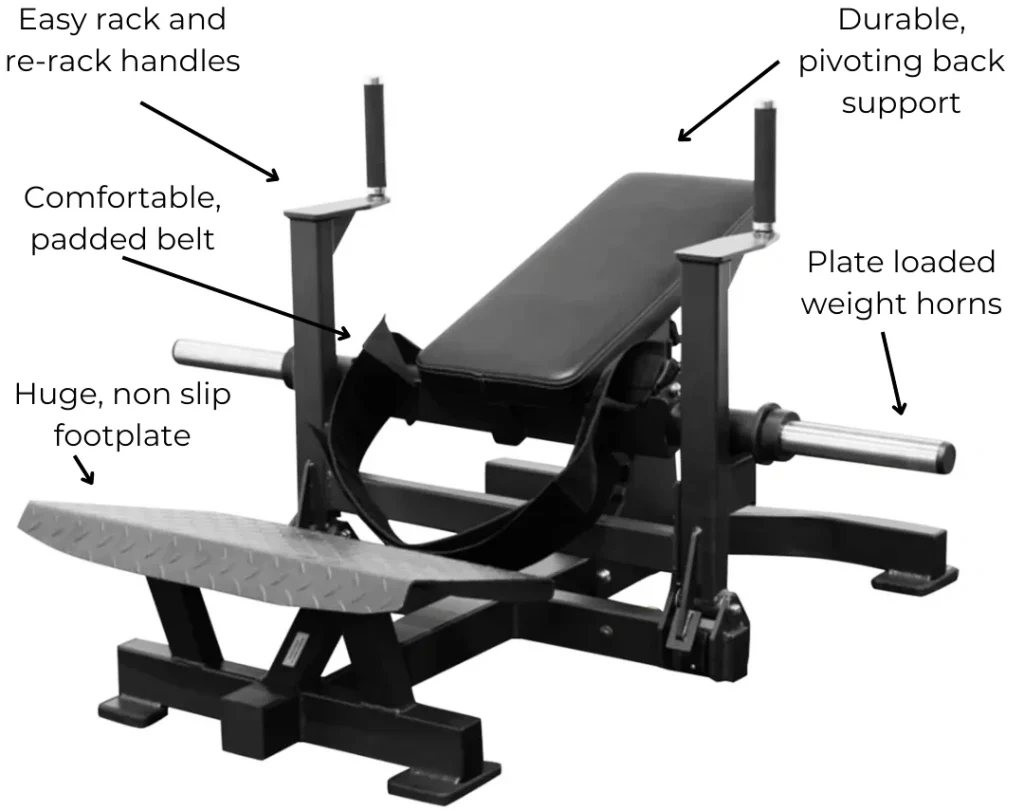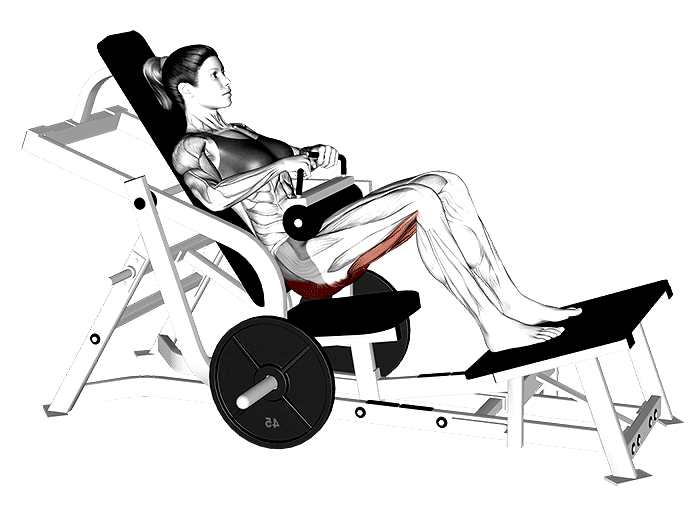
Hip thrust machine weight is one of those things nobody really explains. You sit down, glance around, and wonder—am I lifting too much? Too little? Meanwhile that guy’s over there casually repping 100kg like it’s nothing.
Not gonna lie — it just throws you off. You stack a few plates, adjust the bench, and just hope it feels right. But here’s the thing: there’s no perfect number. Only the weight that fits you.
New or experienced — if the weight’s not right, the work doesn’t land. It affects your results, your form, and yeah—your confidence too.
This guide breaks down how to choose the right hip thrust machine weight, step by step.
Hip thrust machine weight isn’t always what it says. You load up 60kg, but it feels like 40. Or 80. What’s going on?

Let’s clear it up.
1. Not all machines are built the same
Some machines use weight stacks with a pulley system. Others need plate loading, like barbells. And some have built-in resistance systems with hydraulic or cable tension.
Each design changes how much force your body actually feels.
➡️ Example:
Two machines both say 50kg. But one has thick pulleys with more friction — so it feels heavier. The other uses angled rails that reduce resistance — so it feels lighter. Same number. Totally different effort.
2. “Empty” machines still have weight
Most machines have starting resistance — even with no plates or pins.
That’s the frame, the bench, the cables — they all have weight. You might already be pushing 15–25kg just to move the machine.
➡️ You sit down, load nothing, and still feel resistance. That’s not your imagination.
3. The angle and path of motion matters
If the machine moves horizontally, it reduces vertical load. If it slides upward at an angle? It pulls against gravity more.
Some machines make the thrust feel hard at the start. Others only challenge you at the top. That changes where the effort goes — and how much weight your glutes truly fight.
So yeah, hip thrust machine weight isn’t as simple as “add 10kg.”
It depends on:
Forget the number for a sec. Focus on how hard it actually feels. Your muscles don’t lie — even if the machine does.
Hip thrust machine weight should fit your strength level — and your glute control. No clue where to start? Just go by your body weight — simple.
Here’s a general rule:
👉 Suggested Starting Ranges:
| Level | Women (kg) | Men (kg) | What It Should Feel Like |
|---|---|---|---|
| Beginner | 20–40 kg | 40–60 kg | Controlled reps, feel glutes, clean lockout |
| Intermediate | 50–70 kg | 70–110 kg | Muscle fatigue sets in by rep 8–10 |
| Advanced | 80–120+ kg | 120–180+ kg | High load, clean form, deep glute engagement |
Example:
A 60kg woman might start with 30–35kg. If she’s been training for months, 60–70kg is totally reasonable.
A 75kg man with decent strength could aim for 80–90kg. But if his glutes aren’t activating? Weight means nothing.
✅Feeling matters more than numbers.
If the weight feels too easy and you barely feel your glutes? It’s time to add 5–10kg.
If your form breaks down before rep 6? You’ve gone too heavy.
✅Here’s the deal:
Hip thrust machine weight should challenge you — but not wreck your form. Sounds obvious, but most people either play it too safe or go too hard, too soon.
So how do you know it’s the right weight?

🔹 You feel it in your glutes — not your back
If your lower back is lighting up? That’s your body yelling “wrong muscles!”
The glutes should be doing 90% of the work. Anything else means the weight’s too much — or your form’s off.
🔹 You can complete 8–12 reps with control
Not 20 reps while scrolling TikTok. Not 4 reps where you’re shaking like a leaf.
You want that sweet spot: the last 2–3 reps feel hard, but doable. That’s real training tension.
🔹 You control the entire range
No bouncing off the bottom. No slamming down the weight.
Smooth up, pause at the top, slow down. If you can’t do that? Lighten up.
🔹 Bonus tip: The “next set” test
After you rest, ask yourself:
“Could I do another set with the same weight, same form?”
If yes — you’re good. If no — adjust.
The right hip thrust exercise machine weight doesn’t feel random. It feels earned. Glutes on. Sweat’s dripping. And now you’re locked in, whether you like it or not.
That right there — that’s what you want.
Hip thrust machine weight only works if you’re using it right. And honestly, most mistakes come from either rushing, guessing, or trying to impress someone who isn’t even watching.
Let’s go through the usual errors:
❌ Lifting too heavy
You load 100kg, thrust it up, and your spine turns into a question mark. No pause, no control, just pure chaos.
That’s not strength. That’s survival mode.
Fix: Lower the weight. Focus on full range and clean lockout. Make your glutes do the work — not your ego.
❌ Going too light
If you’re doing 20 reps and feel nothing but boredom? Yeah, too light.
You’re burning calories, not building muscle.
Fix: Add 5–10kg. You should feel fatigue by rep 10. Not collapse — just that sweet “burning but I got this” zone.
❌ Bouncing or rushing
You thrust up, drop down, repeat. No pause, no control — no results.
Fast reps = zero tension = wasted time.
Fix: Slow down. Pause at the top. Own every second of the set.
❌ Copying others
She’s doing 80kg. He’s doing 140kg. So you… copy? That’s not training. That’s guessing.
Fix: Train at your level. What they lift has nothing to do with your glutes.
Hip thrust machine weight should feel hard — not reckless. If it’s too easy, you’re coasting. Too heavy? You’re just surviving.
The right weight makes your glutes burn, your form stay tight, and your reps feel earned.
Start light. Add weight when it stops feeling hard.
Track how you move, not just what the machine says.
Forget chasing numbers.
Train smart.
Let your glutes lead.
Related articles:
Standing Hip Thrust Machine for Better Glute Gains
Top 10 Hip Thrust Alternative Exercises for Glutes
How To do Hip Thrusts on Smith Machine
I’m Jessica Camp, a passionate fitness enthusiast and the creative force behind Inpek Fitness’s content. With over a decade in the fitness industry, I combine my expertise in exercise science with a deep knowledge of commercial gym equipment. I’m dedicated to promoting health and wellness by sharing valuable tips, training techniques, and the latest trends in Pin Loaded Machines, Plate Loaded Machines, Multi Function Gym Machines, Gym Multi, and Free Weights. Whether you’re a gym owner or a fitness enthusiast, my articles are crafted to inspire and empower you to reach your fitness goals. When I’m not writing, I love working out and exploring innovative fitness solutions.
Looking to enhance your gym with premium equipment? Have inquiries or ideas? Complete the form below to engage with our expert team. We’ll work with you to realize your fitness facility goals efficiently and effectively.